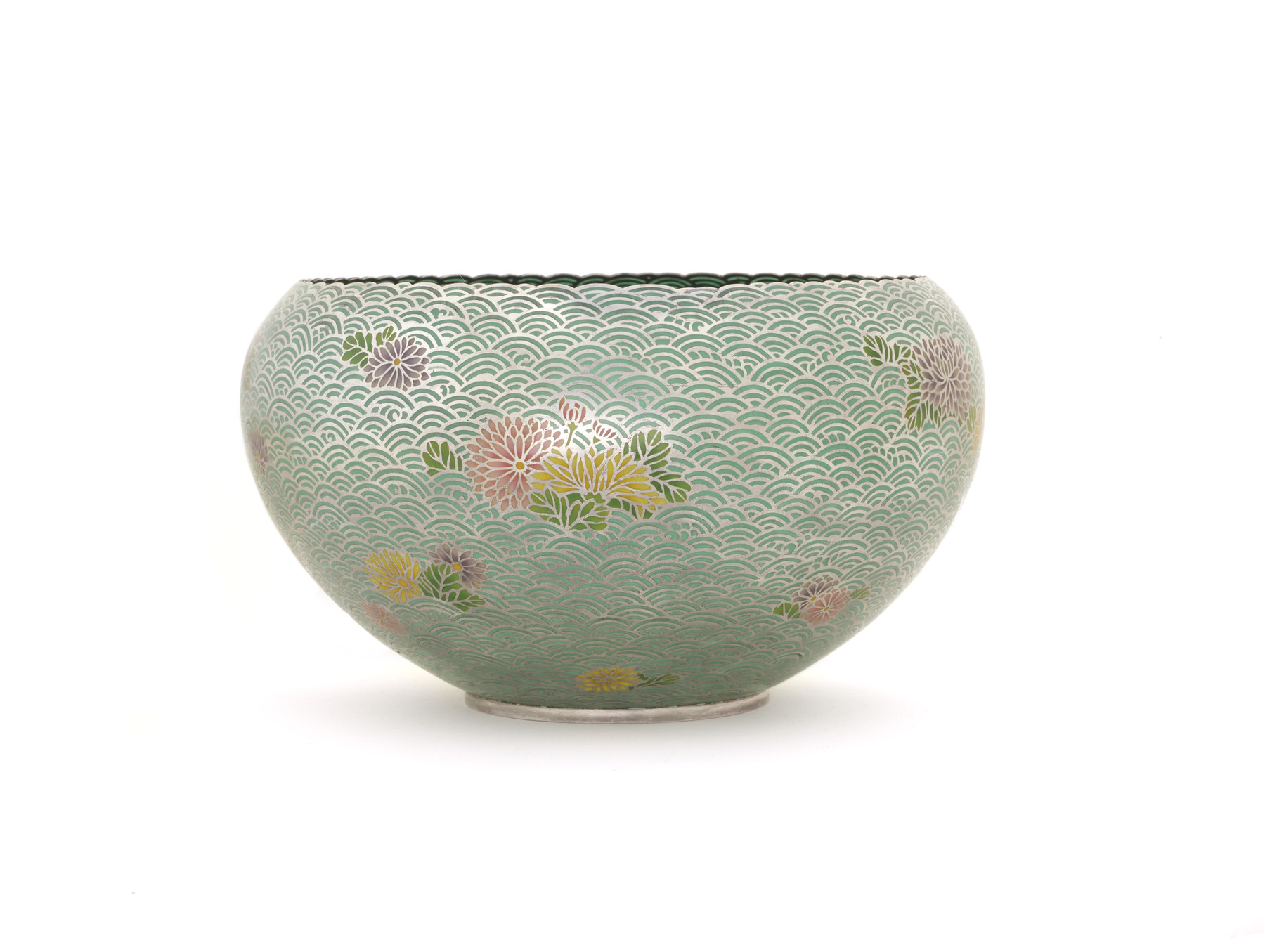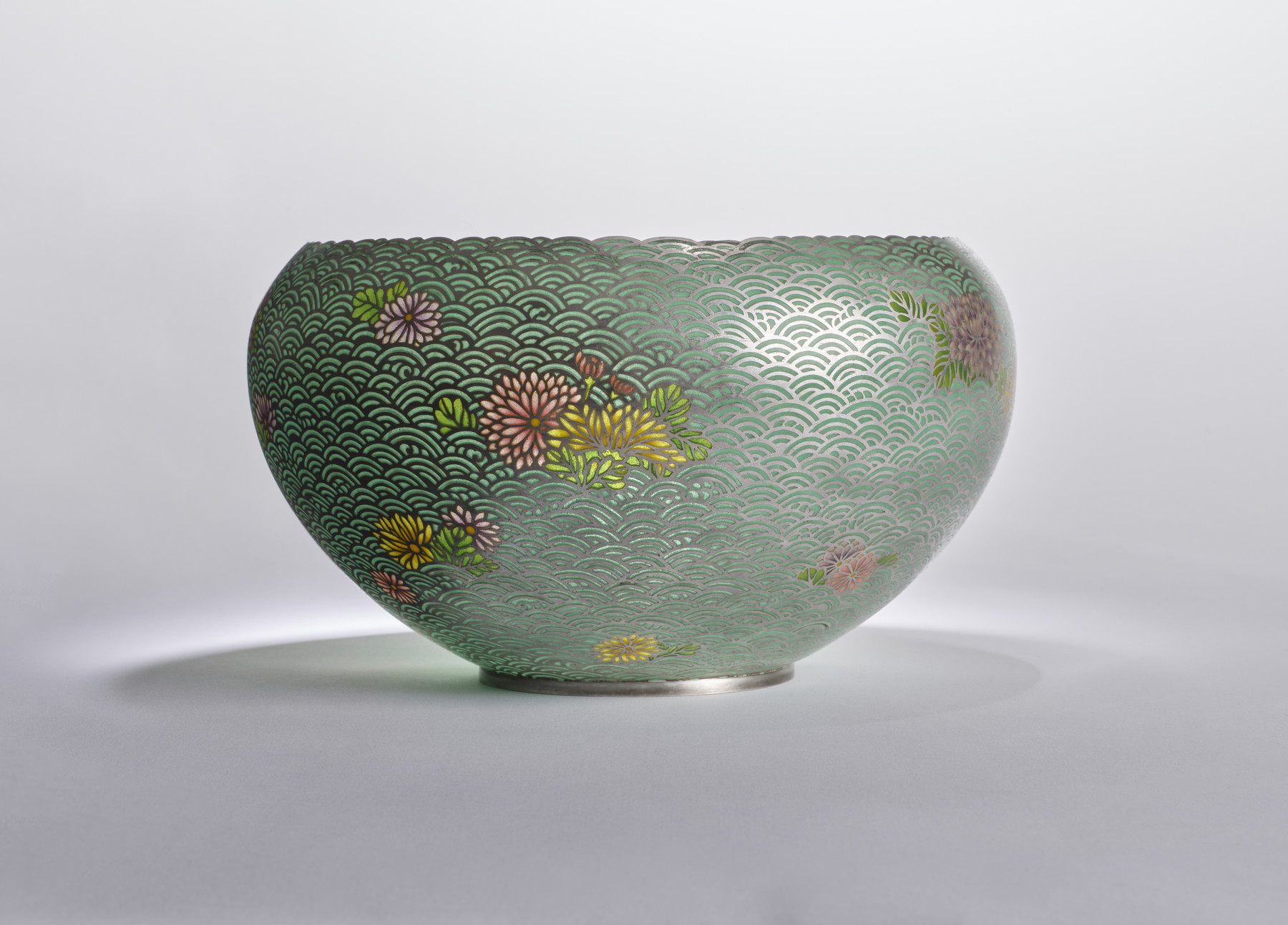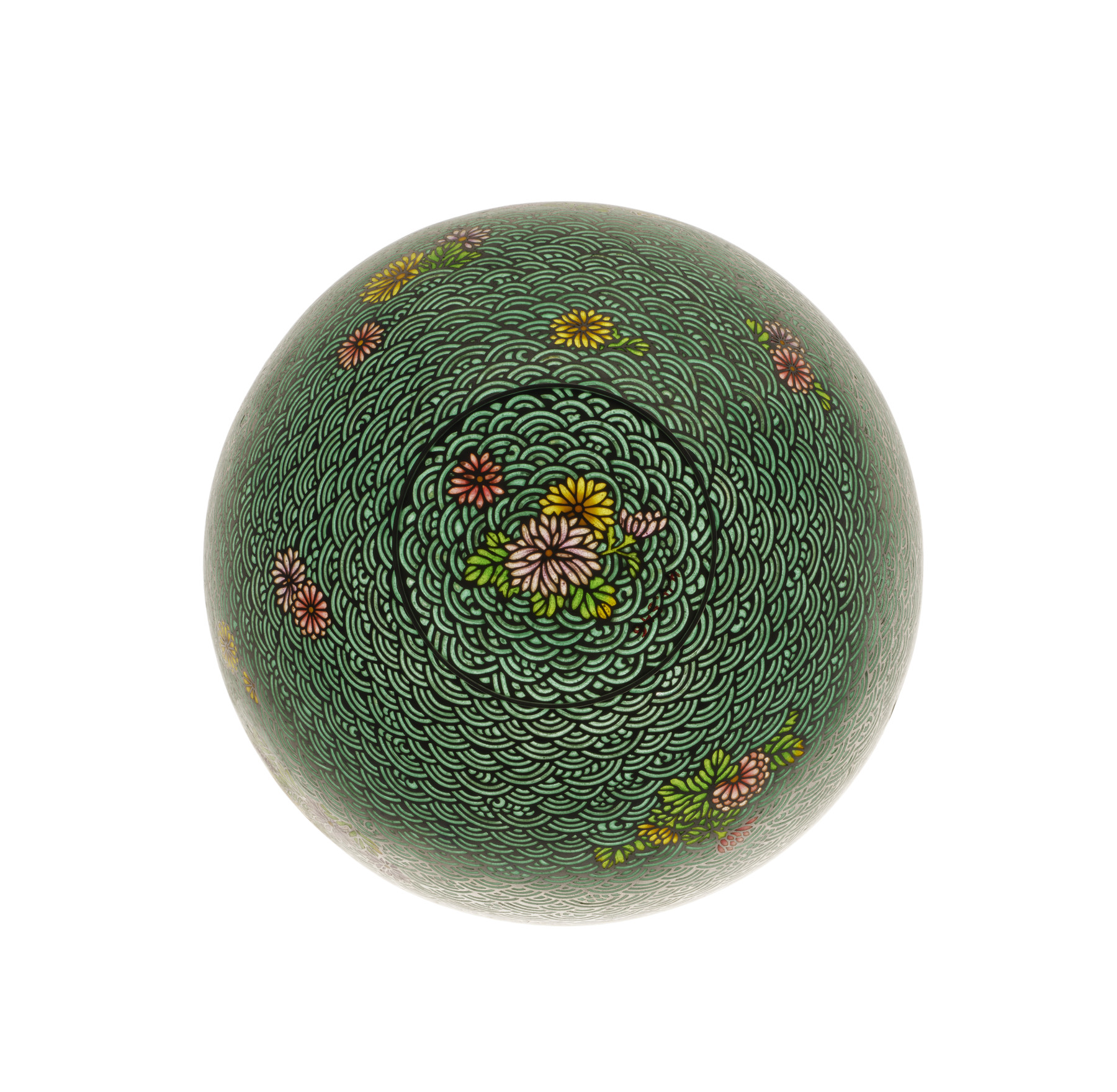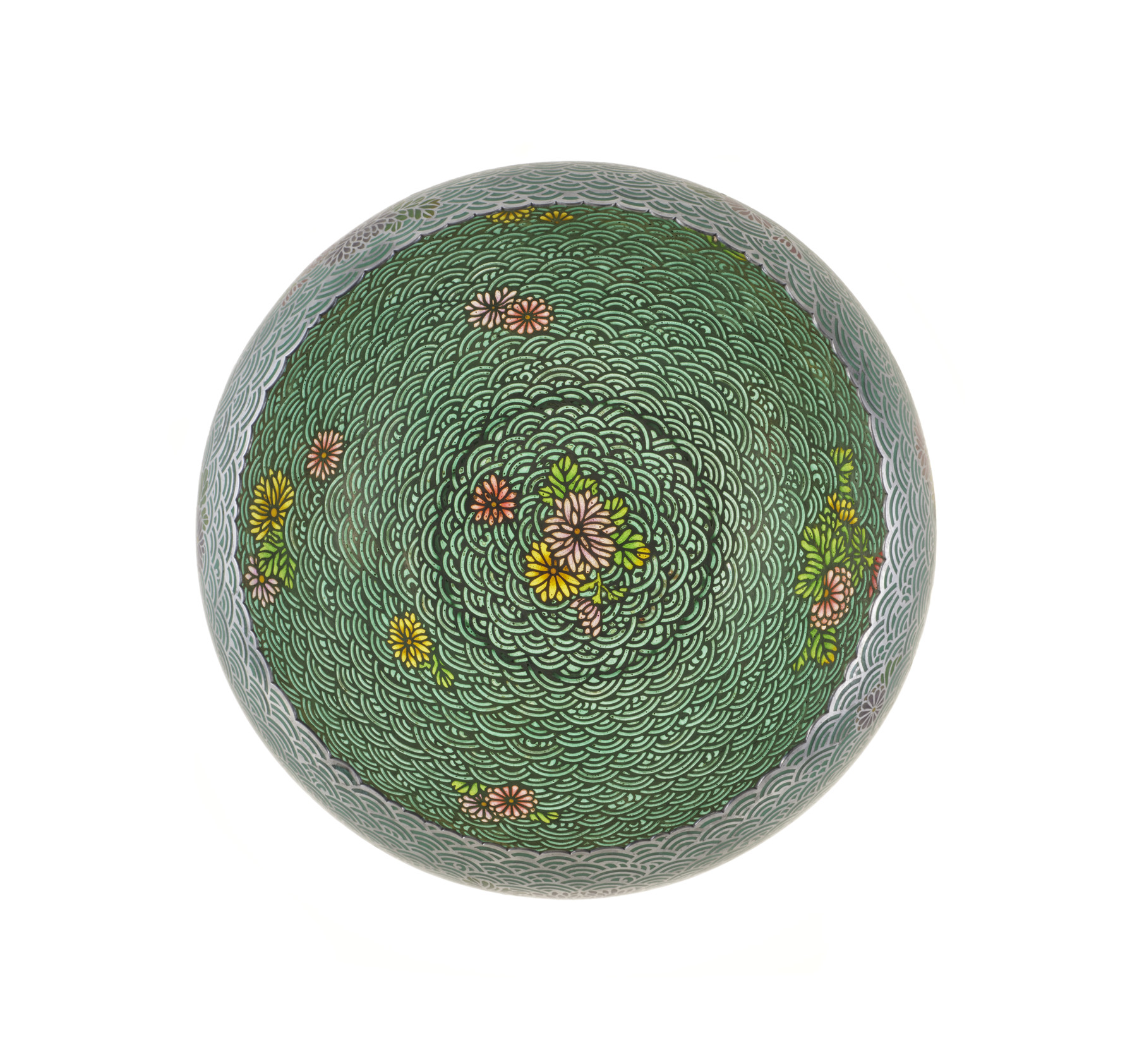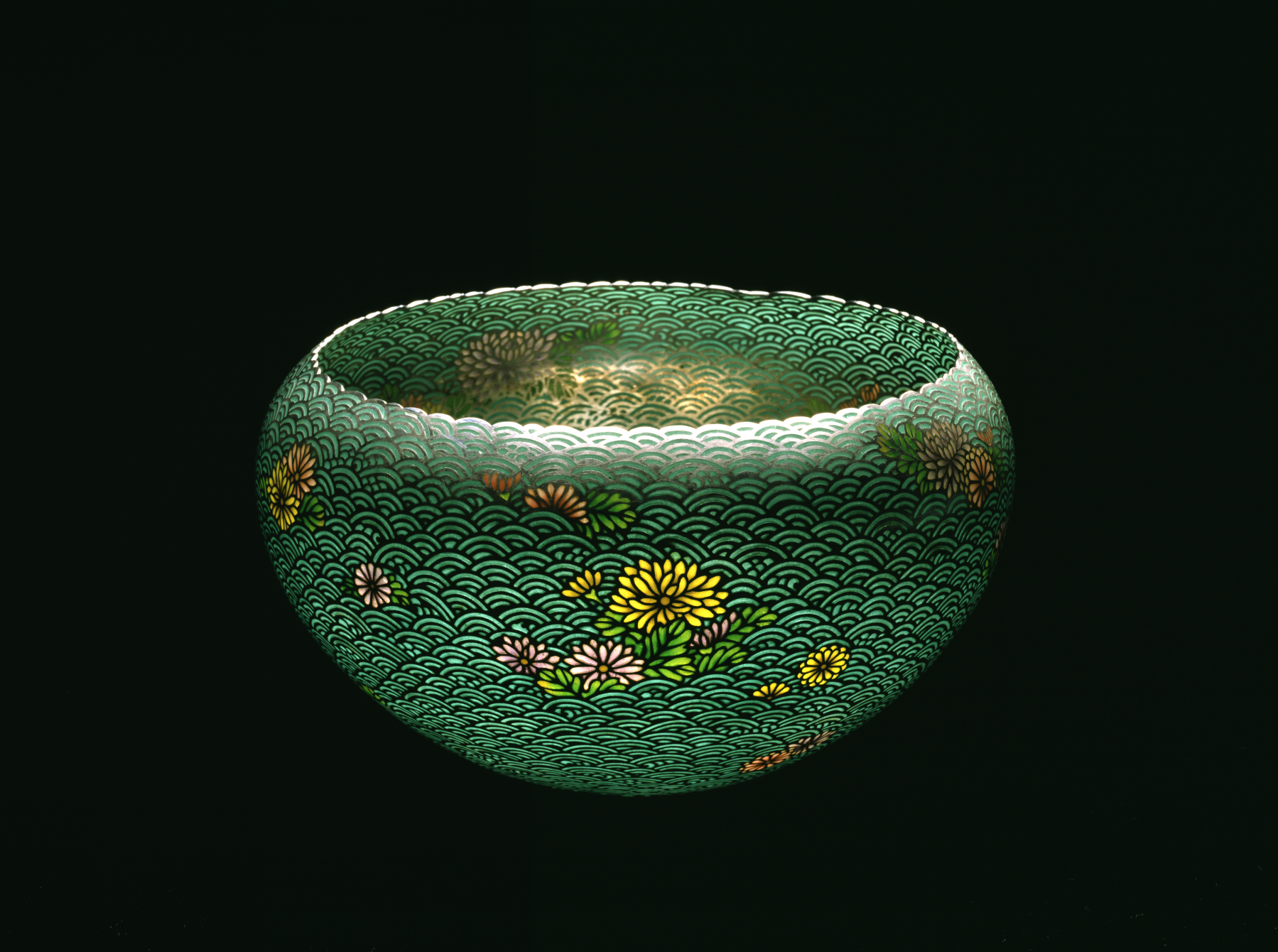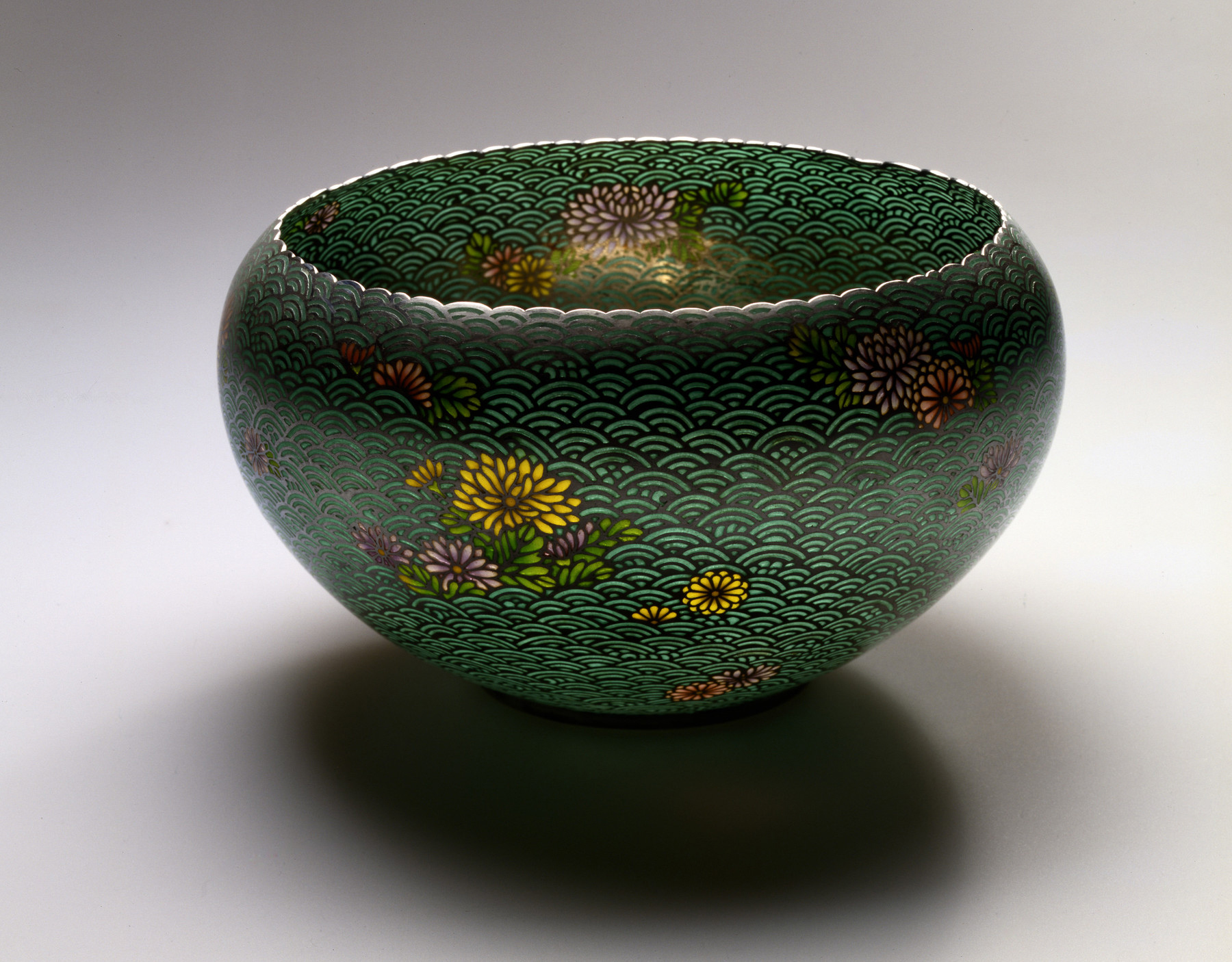Bowl with Chrysanthemum Blossoms
(Japan and Korea )
With its brilliant design and masterful craftsmanship, this bowl was certainly made to catch the eye of visitors to the Paris Exposition Universelle in 1900—including William and Henry Walters. The design depicts yellow, pink, and purple chrysanthemums—a traditional flower of autumn—and their green foliage floating amid a pattern of curved waves. The translucency of the colored enamels (powdered glass) allows for light to pass through and illuminate them like stained glass.
Provenance
Provenance (from the French provenir, 'to come from/forth') is the chronology of the ownership, custody, or location of a historical object. Learn more about provenance at the Walters.
Exposition de Paris, 1900; Henry Walters, Baltimore, 1900, by purchase; Walters Art Museum, 1931, by bequest.
Exhibitions
| 2014-2016 | From Rye to Raphael: The Walters Story. The Walters Art Museum, Baltimore. |
| 2012-2014 | Inventing the Modern World: Decorative Arts at World's Fairs, 1851-1939. The Nelson-Atkins Museum of Art, Kansas City; Carnegie Museum of Art, Pittsburgh; New Orleans Museum of Art, New Orleans; Mint Museum of Art Uptown, Charlotte. |
| 2025 | Japanese Cloisonne Enamels. The Walters Art Gallery, Baltimore. 1996-0. |
Geographies
Japan, Tokyo (Place of Origin)
Measurements
H: 4 5/8 x Diam: 8 3/16 in. (11.8 x 20.8 cm)
Credit Line
Acquired by Henry Walters, 1900
Accession Number
In libraries, galleries, museums, and archives, an accession number is a unique identifier assigned to each object in the collection.
In libraries, galleries, museums, and archives, an accession number is a unique identifier assigned to each object in the collection.
44.546


